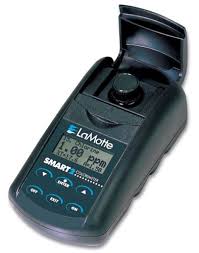Testing Turbidity
Turbidity in water is a measurement of the relative clarity. It is an expression of the amount of light that is scattered when a light is shined through the water. The more the light is scattered, the higher the turbidity reading.
In practical terms, turbidity is an aesthetic problem but it also is an indication of more serious problems, like bacterial growth or the presence of metals.
Turbidity measurement is confusing because it can be expressed in different terms. Labs usually report turbidity in units called NTU (Nephelometric Turbidity Units), FAU (Formazin Attenuation Units), or FTU (Formazin Turbidity Units).
Although the three scales measure turbidity differently, they are essentially the same in value. 1 NTU = 1 FTU = 1 FAU.
For practical purposes, the EPA limit for turbidity in drinking water is 1 FTU. Anything above 1 FTU should be treated. Water can be very clear to the naked eye and have an unacceptable turbidity reading.





